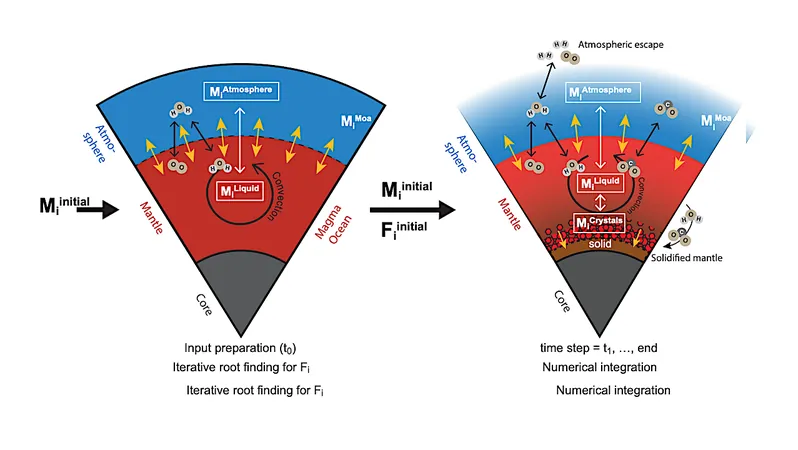
Amazing Discoveries: How CO2 Influences the Volatile Mix in Magma Oceans of TRAPPIST-1 Planets!
2025-05-24
Author: Olivia
Exploring the TRAPPIST-1 Star System: A Glimpse into Habitable Worlds
In a groundbreaking study, scientists delve into the intriguing effects of carbon dioxide (CO2) on the rocky planets TRAPPIST-1 e, f, and g during their formative magma ocean period. These planets are currently the hottest targets for astronomical observations, holding the potential for habitability.
The Importance of Volatile Budgets in Planetary Evolution
Understanding the volatile budget, especially during the magma ocean phase, is crucial not just for grasping how these planets formed, but also for assessing their viability as hosts for life. Researchers conducted detailed simulations with varying amounts of water (from 1 to 100 terrestrial oceans) and CO2, considering different surface reflectivity levels (albedo). As a result, they uncovered fascinating dynamics regarding the evolution of these atmospheres.
From CO2 Domination to Potential for Water Worlds
Initially, the atmosphere of these planets is largely dominated by CO2, but factors like the amount of water can lead to a transformation into a water-dominated state. For scenarios involving less than 10 terrestrial oceans of water, researchers noted a tendency toward drying out, potentially leaving an atmosphere rich in CO2.
Strategic Delays in Atmosphere Loss: A Game Changer?
However, the study highlights a unique situation for TRAPPIST-1 e and f where water loss can be significantly slowed due to CO2 diffusion. This intriguing mechanism allows water to persist much longer beneath a CO2 atmosphere, delaying the solidification of the mantle by as much as 200 million years, depending on reflectivity.
Insights from the Iron Composition of Inner Planets
By adjusting their compositional models to match the metallicity of TRAPPIST-1, researchers found that the inner planets (b, c, d) host about 27% iron by weight. This composition provides a valuable comparison for TRAPPIST-1 e, where particular interest lies in its possibly partially dry evolution and significant CO2 atmosphere.
The Chase for Life: What’s Next?
The research encourages further comparative studies between TRAPPIST-1 e and its neighboring inner planets, potentially revealing deeper insights about the historical evolution and formation of these enigmatic worlds. As we continue to unlock the secrets of TRAPPIST-1, the quest to find extraterrestrial life grows ever more exciting!









 Brasil (PT)
Brasil (PT)
 Canada (EN)
Canada (EN)
 Chile (ES)
Chile (ES)
 Česko (CS)
Česko (CS)
 대한민국 (KO)
대한민국 (KO)
 España (ES)
España (ES)
 France (FR)
France (FR)
 Hong Kong (EN)
Hong Kong (EN)
 Italia (IT)
Italia (IT)
 日本 (JA)
日本 (JA)
 Magyarország (HU)
Magyarország (HU)
 Norge (NO)
Norge (NO)
 Polska (PL)
Polska (PL)
 Schweiz (DE)
Schweiz (DE)
 Singapore (EN)
Singapore (EN)
 Sverige (SV)
Sverige (SV)
 Suomi (FI)
Suomi (FI)
 Türkiye (TR)
Türkiye (TR)
 الإمارات العربية المتحدة (AR)
الإمارات العربية المتحدة (AR)